Art and Function in Harmony
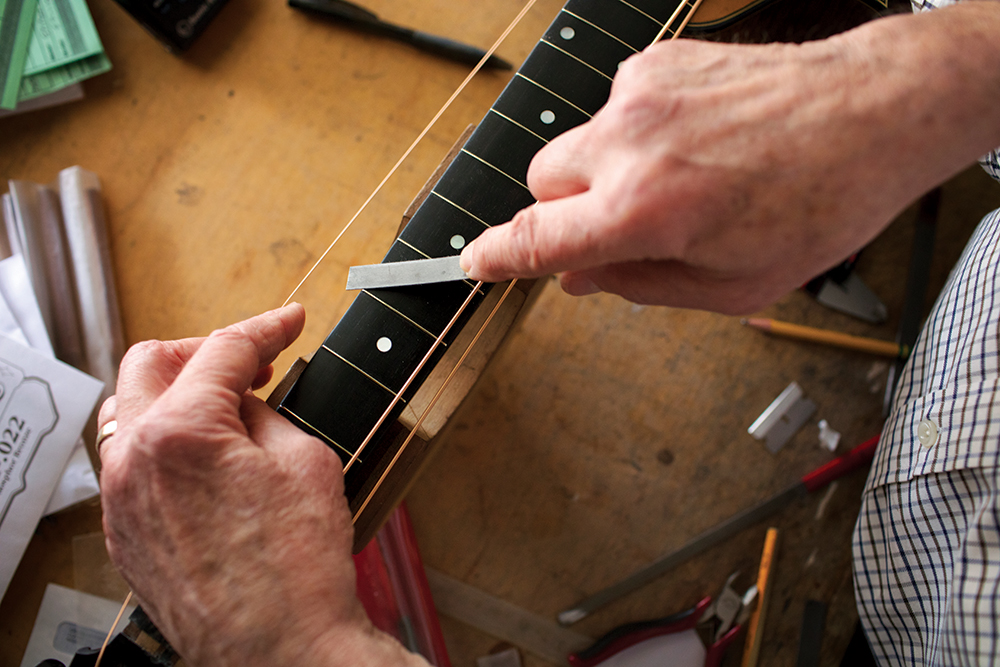
The Time Jumpers, a band of Nashville studio musicians, bring considerable talents to the 3rd and Lindsley Bar & Grill stage every Monday night. The faces are not familiar, and most of the names wouldn’t ring a bell, but Vince Gill usually sings lead vocals as the group explores a ready mix of bluegrass and Texas swing before a packed house. While I’ve never been an outspoken fan of bluegrass music, I recognize its uniquely American heritage and applaud the passion and commitment of musicians who take the stage to preserve and celebrate that history. Harry Sparks is a part of that history, and I’m meeting him in Nashville to talk about that. But first he recommends a visit with The Time Jumpers, so I settle in for the 8 o’clock show, thinking it will be a nice diversion and cultural field trip. Vince is out of town, but the kid on lead vocals—Charlie Worsham, who is a kid only because he’s half the age of the rest of the band—is strong enough to worry the man he’s sitting in for, and the show delivers on the expectations.
Through the evening, I talk with Harry in fits and starts, between numbers and sets, and I sense immediately that there’s more to the story. We’d spoken on the phone, but this is our first meeting. At 77, Harry is engaging and loquacious, with a bright face anchored by large, searching eyes. At first I thought his glasses might’ve been magnifying the size of his eyes, but after a few minutes of conversation it became apparent that, in fact, Harry approaches the world wide-eyed and wide open. His activities and interests range widely, from architecture to vintage guns, but his connection to bluegrass music and musicians goes back a long way. He’s in Nashville to help the Country Music Hall of Fame assimilate some old tapes he uncovered, recordings of bluegrass legends that hadn’t seen the light of day since reel-to-reel was cutting-edge technology.
One of the more important connections for Harry is Vince Gill. The two have been friends for many years, stretching back to Harry Bickel’s Bluegrass Hotel in Louisville, Kentucky. Vince was a young talent, breathing in the bluegrass vibe as close to the source as he could get, while Harry was emerging as the go-to man for repair and rehabilitation of fretted instruments, working out of a shop in the basement. The relationship stuck, and the two have even swapped ownership of a very special guitar, a Martin D-45, one of the few remaining from the prewar 1940s. Harry bought the guitar in the mid-1970s for $7,500 from George Gruhn, a legendary Nashville purveyor of fine fretted instruments and longtime friend.
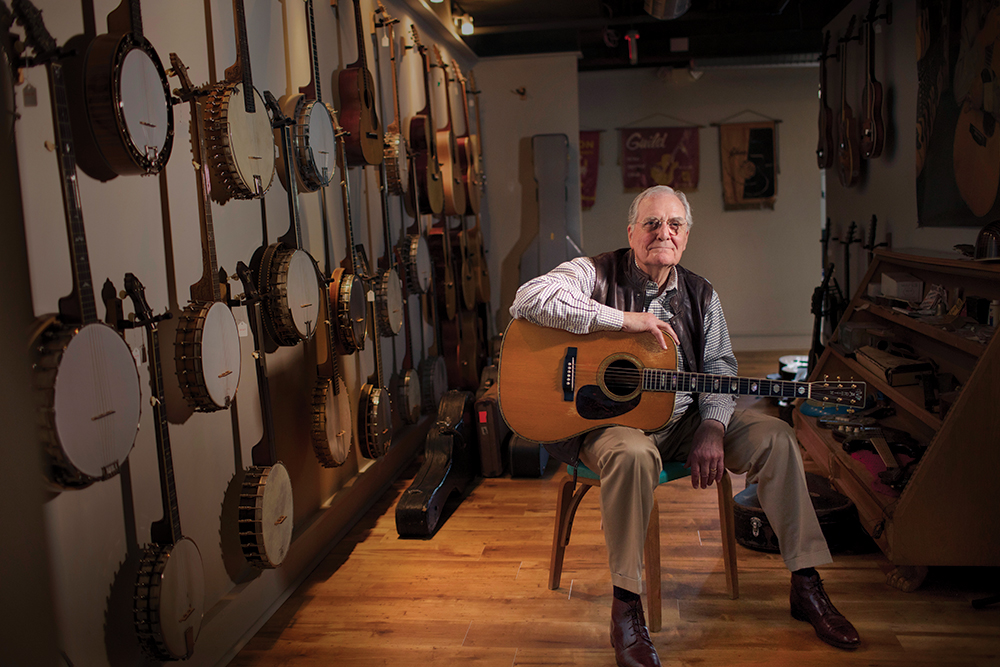
When recession hit Harry’s architecture business a decade later, he sought a suitable home for his Martin, a place where the instrument would be played and enjoyed, not hermetically sealed in its own history and investment value. Vince agreed to shepherd the guitar, they agreed on the terms, and Harry kept the lights on. The best part of the story is that Harry wouldn’t accept more from Vince than he had in the guitar, the original $7,500, and Vince sold him back the guitar years later at the same price, all for an instrument that may fetch as much as $300,000 in today’s market. In addition to sharing a guitar, Vince and Harry shared the Ryman Auditorium stage for a song or two in recent years, celebrating birthdays and years of friendship in true bluegrass style.
Harry’s connection to bluegrass runs deeper, though, and can be traced back to the late 1950s, when he was an engineering student at Murray State University. Having heard Flatt and Scruggs play an impromptu concert in his hometown of Murray, Kentucky, Harry was an early convert to the idiosyncratic tones coming from the guitars and banjos of emerging folk music. While still in college in the 1960s, Sparks played in a band touring the basements and small clubs around Cincinnati. When they were asked to play a large event near Rabbit Hash, Kentucky, they were prompted for a band name at the last minute by the emcee who was set to introduce them. That was the debut performance of the Rabbit Hash Ramblers, a group who played through their college days and into young adulthood.
The stage wouldn’t be Harry’s place to make his mark, though. He readily admits that, while he plays well and sings better than most, he hangs out with people who “play the daylights out of instruments” and “sing beyond belief.” His greatest gift to his adopted bluegrass community has been his skills as a luthier. “By making instruments sound and play a little better,” Harry recounts, “in the hands of people who are wonderful, both vocally and instrumentally, I feel like I have made a substantial contribution to the quality of the music. And that really means something to me.” For decades, artists from across the music universe, faced with stringed instruments in need of repair, sought the counsel and magic of “Sparky,” as his friends in the industry have come to call him. His ability to return famed and favorite instruments to the performance stage has cemented Sparky’s place of honor in the world of bluegrass and folk music. And along the way, he’s built what is considered the third-largest collection of fine guitars and prewar Gibson banjos in the world. Many of those instruments are now in the hands of cabaple players.
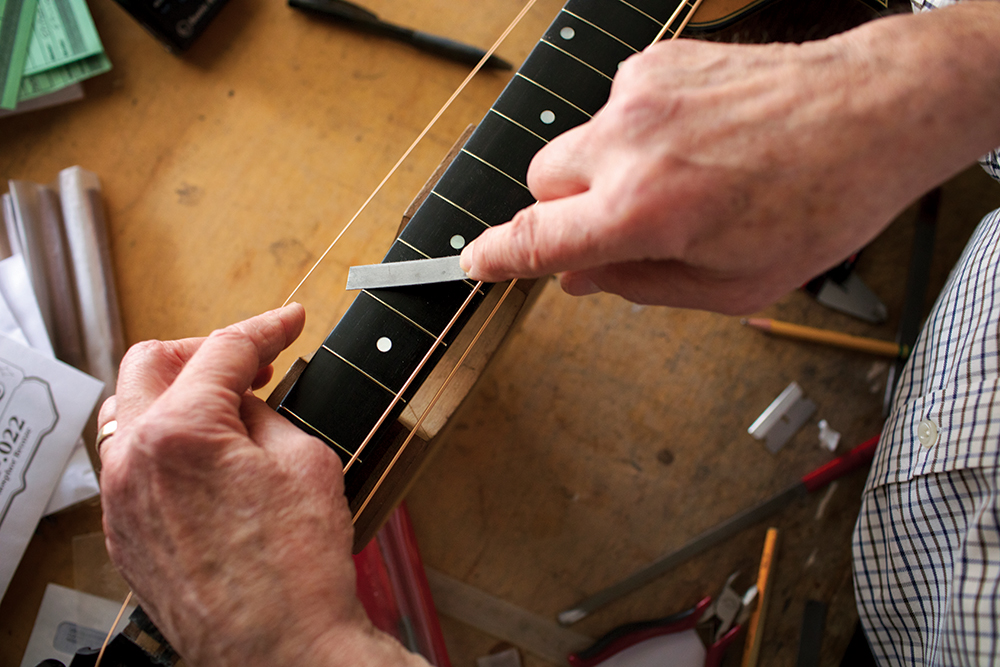
Aiming For A New Hobby
Music and memories weren’t the only things Sparky collected through the years. His childhood love of hunting and fishing has stayed with him, and bluegrass ushered in the next of his obsessions in 1963, when Bill Sherman of the Queen City Balladeers asked the Rabbit Hash Ramblers to play a square dance in Friendship, Indiana that coincided with the National Muzzle Loading Rifle Association meeting and championship shoot. Sparky was immediately smitten with blackpowder guns, and his collecting began in earnest. Along the way, he met and befriended Andy Baker, a doctor with a hearing impairment and a penchant for flintlock shotguns and rifles who wanted to learn how to play a banjo. Lack of hearing was not the impediment it sounds like, since Baker precisely tuned his banjo by watching the vibrations of the strings. Together they picked at the banjo and shot targets and did a bit of hunting, all the while cultivating Sparky’s interest in vintage guns and his skill at the trigger. He competed with flintlock shotguns in the late 1980s and won all but one of his national matches. The early 1990s offered similar success with flintlock and percussion shotguns. By the end of the decade, Sparky was competing internationally, culminating in the 2008 World Championships in Australia.
During his competition career, Sparky sought to improve his equipment. His fondness for Westley Richards & Co. guns evolved through his early investment in flintlock shotguns, when the fit and finish of different vintage guns began to make a difference in his results. Drawn especially to the fit, Sparky was directed toward his own hometown of Murray, Kentucky, where Lewis Drake, a childhood friend by another name, showed him an 1841 Westley Richards side-by-side. Initially hesitant to sell the gun, Drake acquiesced a year or two later. But the story doesn’t end there. Sparky asked Drake to find a very specific Westley Richards single-barrel flintlock that could be used in international competition, and Drake found him not 1 but 4, as in #4.
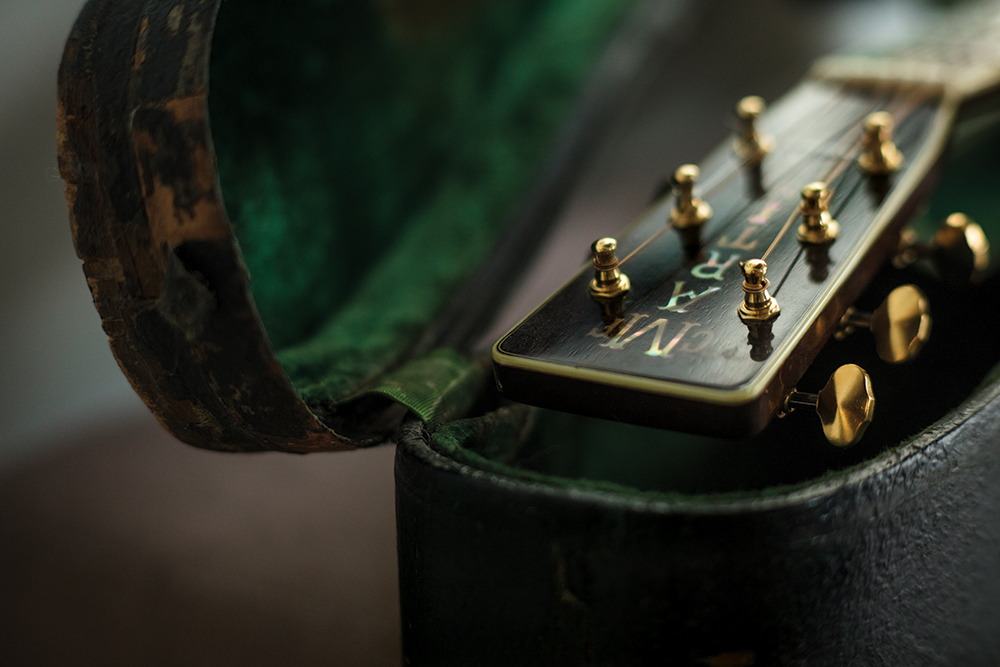
Westley Richards #4
As Sparky continued to compete internationally, he traveled to Wedgnock, England, between Birmingham and London. With his pair of vintage Westley Richards in hand, Sparky drove into Birmingham to visit with the staff at Westley Richards, to make sure he actually had what he thought he had. He walked in the front door, opened the cases, and the world went silent. Eventually, Simon Clode, chairman and managing director of Westley Richards at the time, set the gun down and picked up the phone to call upstairs to the shop. “She’s finally come home,” he said, and quietly replaced the phone, as team members descended from the shop to witness in steel and wood what had only been seen, to that point, in pictures. Serial numbers 1 through 5 were all made at the same time—in 1812, Sparky was told—but only number 4, an 11-gauge flintlock fowler, was accounted for. Simon, as one might expect, offered to buy the treasure, but Sparky demurred. That was not the last time they had that conversation.
Sparky continued his fascination with Westley Richards shotguns, some old and some new—at least new to him. His collection spanned much of the 19th and 20th Centuries, and he seemed to gain a perspective of historical context that had previously eluded him. Dates became very real when manifested in the progression of gun technology—a single-barrel from 1812, or a double-barreled gun from 1841 or 1875, three years before his grandmother was born. As the 1990s came to a close, he wanted to ensure that three centuries of Westley Richards production would echo the march of time in his collection. So he struck a deal with Simon to build a 28-gauge to his personal specifications, but he didn’t want the barrels struck until after 2001. He took delivery of the gun in 2004.
Throughout the process, Simon reiterated his interest in buying number 4. Sparky again demurred, but eventually offered right of first refusal. They agreed to begin discussions at the Southern Side by Side earlier last year, but Sparky recalled with emotion that Simon lost his battle with cancer only months before that discussion could be had.
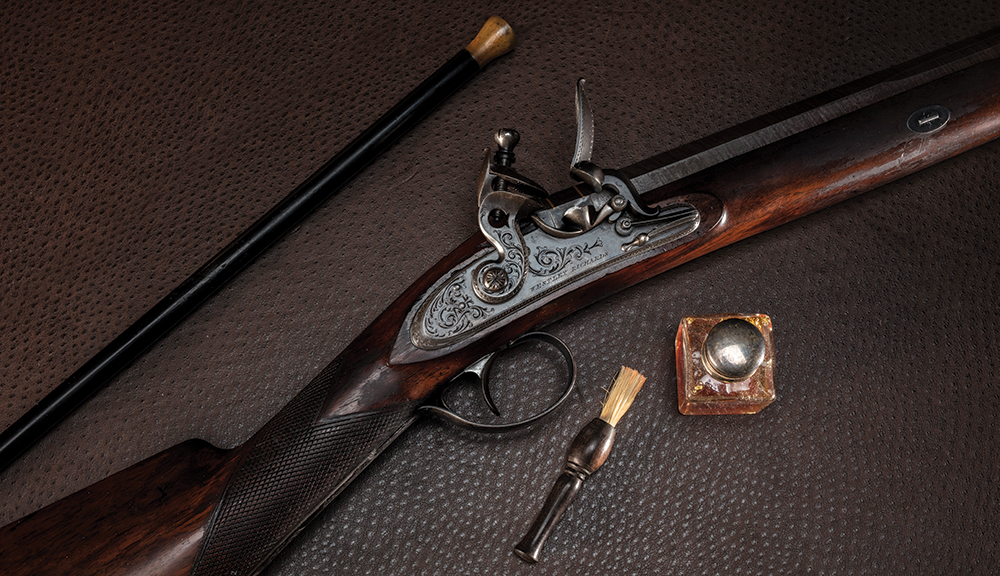
Building A Life
Harry Sparks has been more than an avid collector. “I have an affinity to get overenthusiastic about things,” he says. “If I like them, I get goofy.” But few would argue that his collections of vintage guns and instruments is goofy. To sustain his obsession, Sparks has practiced architecture for nearly five decades, most recently remodeling large-scale retail spaces for national and international clients. These include George Gruhn’s guitar shop in Nashville where we had a chance to share some stories and take some pictures. It goes without saying that he’s met with some success in architecture, but there’s a more significant connection between his vocation and avocations. Harry Sparks is a builder and luthier, a remodeler of both physical and musical spaces, from the largest mall to the smallest mandolin. For him there is a palpable connection between art and function, and his collections reinforce that foundational philosophy.
When Sparks was 12, his father gave him the 16-gauge side-by-side that his father had given him a generation earlier. Four years later, while hunting with that gun, he stumbled upon an old abandoned cabin, and inside he found a broken guitar. It was the beginning of what many have called a hobby gone awry. A young Harry Sparks repaired that old guitar and sold it for $5. The rest, it seems, is history.
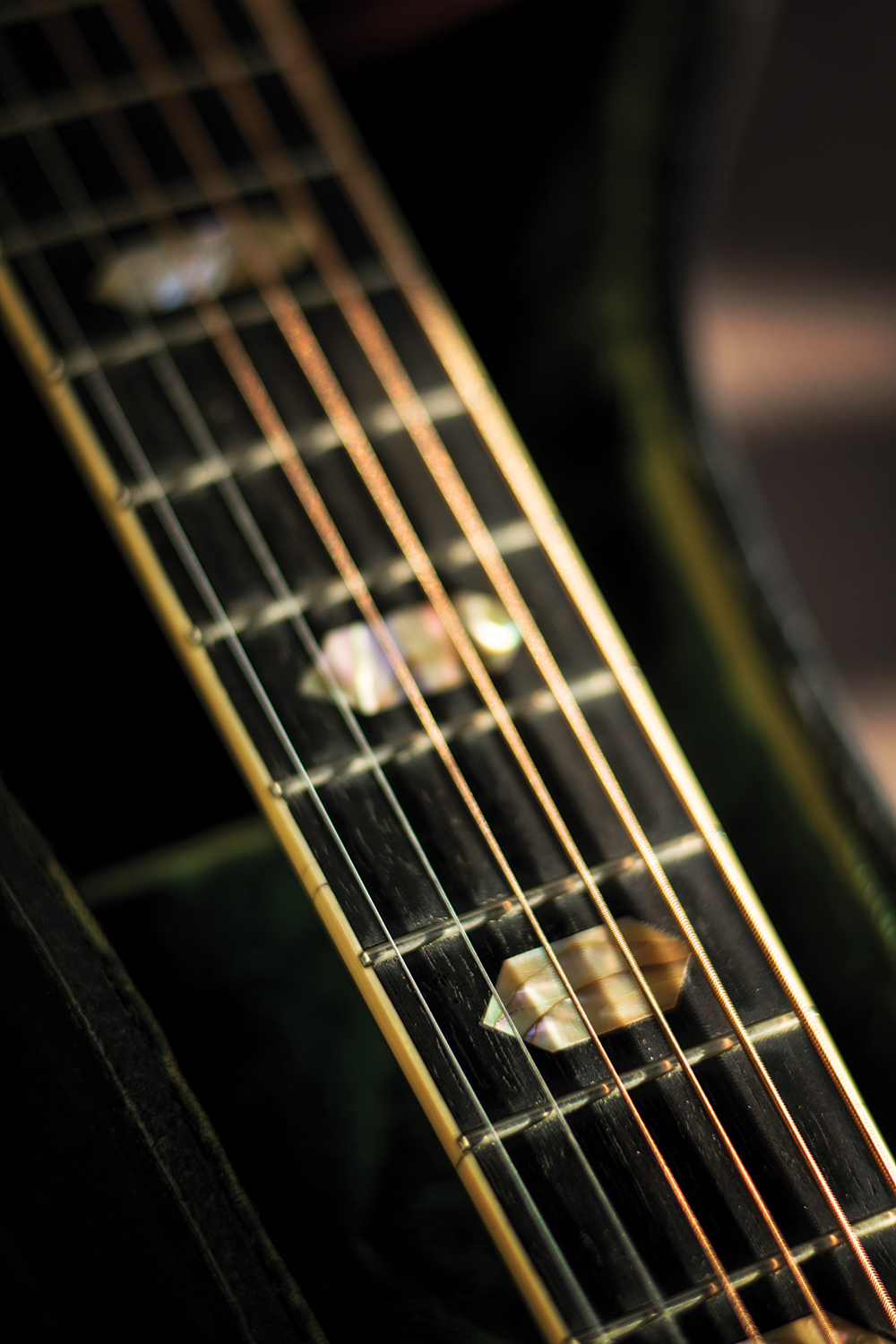
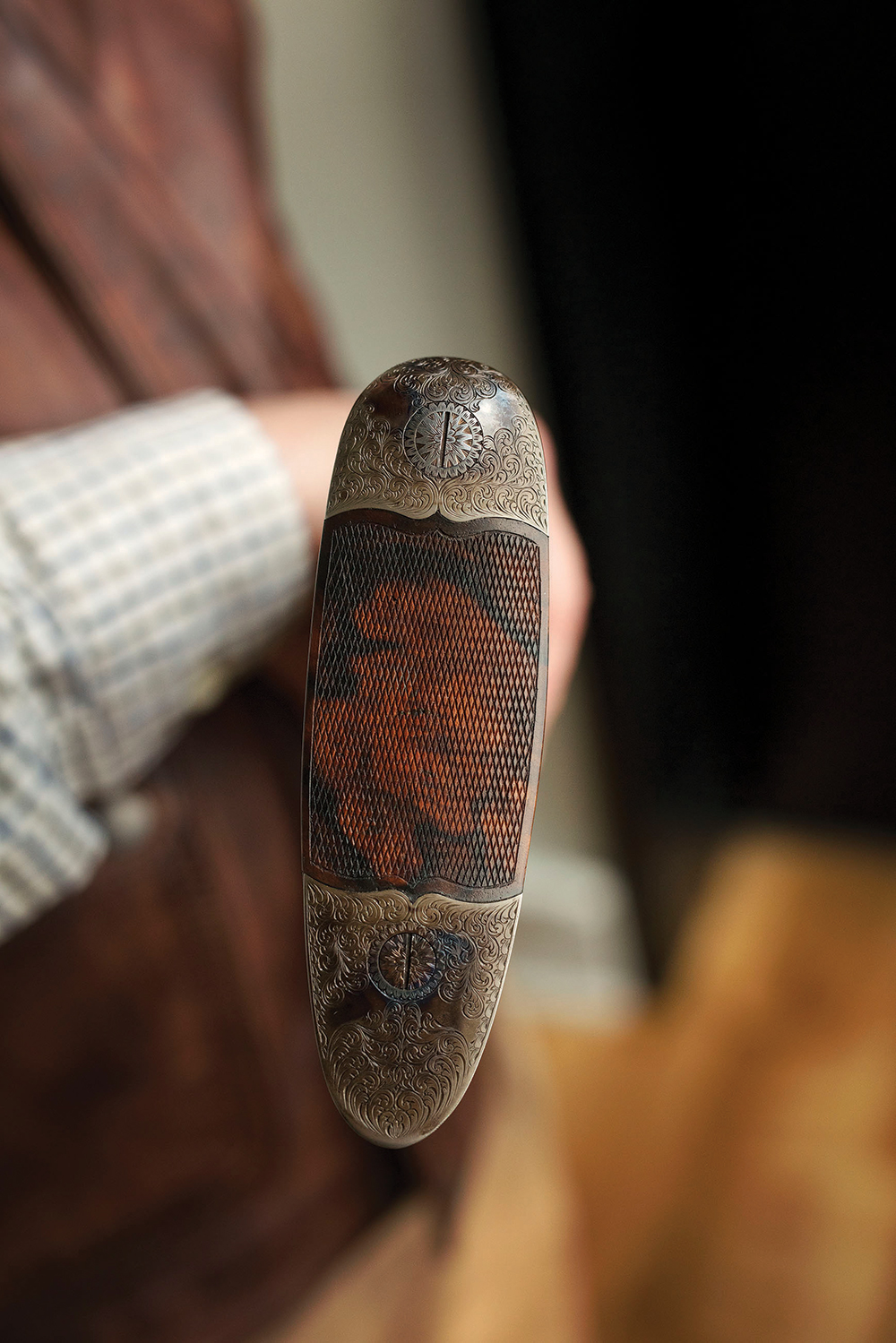
Originally published in Volume 6, Number 4 (June-July 2018) of Covey Rise.
























